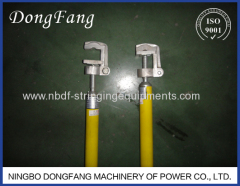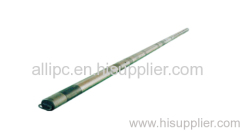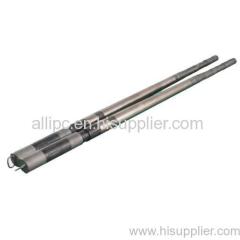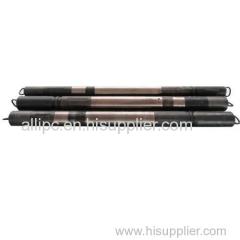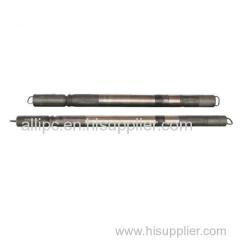|
Baoji Allipower Equipment Co., Ltd
|
5'' OMNI Valve For Oilfield
| Price: | 50000.0~100000.0 USD |
| Payment Terms: | T/T |
| Place of Origin: | Shaanxi, China (Mainland) |
|
|
|
| Add to My Favorites | |
| HiSupplier Escrow |
Product Detail
Halliburton type OMNI Valve, all could change with Halliburton parts.
The Repetitious circulating valve (OMNI Valve) is an annulus pressure operated, recloseable circulating valve. Throughout the operation, the tool is repeatedly cycled up to a predetermined annulus pressure and then released.
The Repetitious valve consists of a nitrogen section, an oil system, a circulating valve, and a ball valve. The nitrogen section contains the nitrogen gas that counter balances the hydrostatic and annulus pressures.
The amount of nitrogen in the tool depends on well hydrostatic (mud weight and depth) and downhole temperature. This information must be known to properly prepare the tool for running in.
Note: With certain completion fluids, the mud weight at the surface can be significantly different from the actual mud weight downhole.
The operating and control mechanisms are contained in a closed oil system activated by annulus pressure acting on the nitrogen chamber, allowing an unlimited number of pressure cycles. The circulating valve and the ball valve work together to keep circulating pressure off the formation. The ball valve will close before the circulating valve opens. The ball valve closes off the workstring.
Nominal Tool Size in. | OD In (mm) | ID In (mm) | Thread Connections | Service Temperature °F(°C) | Length In (cm) | Tensile Rating lb(kg) | Working Pressure Psi (bar) | Flaw Area In2. (cm2) | Number of Ports |
37/8 | 3.90 (9.91) | 1.80 (4.57) | 27/8 CAS | 450 (204) | 278.79 (708.13) | 175,000 (74390) | 15,000 (1034) | 3.61 (23.29.) | 6 |
5 | 5.03 (12.78) | 2.03 (5.79) | 37/8 CAS | 450 (204) | 253.78 (644.60) | 371.458 (168 493) | 15,000 (1034) | 3.61 (23.29.) | 6 |
7 | 7.00 (17.78) | 3.50 (8.89) | 51/4 CAS | 450 (204) | 333.21 (846.35) | 470.191 (213 279) | 15,000 (1034) | 3.61 (23.29.) | 6 |
Related Search
5 Way Valve
Oilfield Equipment
Omni Antennas
Oilfield Drilling Rig
Oilfield Mud Pump
Omni Directional Antenna
More>>


